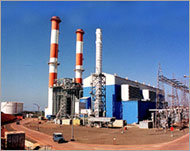Power shortage plagues South Asia
As South Asia enjoys unprecedented economic growth, soaring summer temperatures have highlighted a chronic shortage of electricity that is crippling enterprise and leaving millions to suffer without any hope of respite.

From India, the world’s second fastest growing major economy after China, to impoverished Bangladesh, which has enjoyed 5% annual growth since the early 1990s, governments are plagued by the problem of growing demand for power combined with inadequate supply.
In Bangladesh, where nearly half the 140 million population still gets by on less than a dollar a day, the anger of farmers unable to get power to irrigate their crops has led to violent clashes and the death of at least 17 people.
Meanwhile business leaders have warned that the shortages threaten the nearly 20% growth in the garment industry. The sector constitutes more than three-fourths of the country’s total exports.
Earlier this month almost half of Bangladesh was plunged into darkness for several hours as the national electricity grid tripped shutting down most of the country’s power generation units.
With polls scheduled for next January, the government is keenly aware that power will be a key election issue.
Lack of investment
Last week Khaleda Zia, the prime minister, removed Iqbal Hasan Mahmud, the power minister, and reassigned him as a junior minister for agriculture, a week after he announced it would take at least three years to ease the power shortfall.
Earlier he told AFP that lack of investment was the main reason for the crisis, predicting that problems would increase over the next two years with demand continually increasing but with no new generation plants due to come on line.
 |
|
Bangladesh is reeling from power |
The country’s average shortfall is 700-800 megawatts (MW) daily, rising on occasions to up to 1,800 megawatts, nearly half of output.
Experts say South Asian nations are failing to add the capacity needed to keep up with economic growth, pointing out that China adds more than 28,000 megawatts of capacity on average annually compared to only 4,500MW in India.
“People don’t understand that it’s a 50-year-old problem and it will not go [away] overnight,” the Bangladeshi minister said before his removal.
“The World Bank did not invest in the country’s power generation since 1986. Yet we need at least $2.7 billion in funding immediately to improve the power generation and distribution system and the government alone cannot mobilise that sort of funding.”
No strategy
India has been hailed for its rapid development but critics say it has no viable strategy to tackle its power problems.
In parts of the Indian capital Delhi residents are left to swelter for up to 10 hours at a stretch. Temperatures hit the mid-40s Celsius during May and June.
|
“People don’t understand that it’s a 50-year-old problem and it will not go [away] overnight” Iqbal Hasan Mahmud, |
In some rural areas there is electricity for only two hours a day or none at all. Less than 50% of households nationwide have access to electricity compared with 97% in China.
Experts blame bureaucracy, policy uncertainty and lack of political will and say some 47 power plants are behind schedule.
Lack of capacity combined with soaring demand also afflicts Karachi, Pakistan’s biggest industrial city, where frequent cuts hamper industrial production.
“Industry is suffering billions of dollars losses due to poor electrictiy services,” said MA Jabbar, vice president of the Federation of Pakistan Chamber of Commerce and Industries (FPCCI).
“This is not only adding to the cost of production. We are (also) compelled to face export orders cancellations.”
Past surplus
Pakistan enjoyed a power surplus until last year but this year it is faced with a daily shortfall of 415MW, expected to rise to 1,457MW next year.
Although there are plans to install as many as 45 hydro and thermal power projects with a capacity of about 12,000MW, they are expected to take years to become operational.
 |
|
Bad planning and bureaucracy |
“I don’t think the government will be able to get them installed quickly and we see the power scenario moving from bad to worse,” said Syed Shahnawaz Nadir, research analyst at Noaman Abid Securities.
Sri Lanka is struggling to cope with 8-10% annual increase in demand forcing the country to turn to expensive thermal power.
“Insufficient capacity, resulting from excessive delays in the implementation of power generation expansion and the non-implementation of low cost, large-scale power sources, such as coal power, has led to a high electricity tariff and frequent power shortage,” the Central Bank said in a recent report.
Nearly a fifth of the country is still without electricity.
Demand is increasing at a similar rate in Nepal.
Nepal shortfall
Blackouts earlier this year affected some areas for up to 42 hours per week as low levels of water in hydro-power reservoirs resulted in demand vastly outstripping supply.
“I felt like we had gone back to the dark ages. Normal life was really disturbed,” said Sabita Shrestha, a 19-year old management student from Kathmandu.
Experts say that without added capacity there are no quick fixes.
Instead, they urge governments and private citizens to do everything they can to save power from changing working hours to avoid the hottest part of the day and closing shops and businesses by 5pm.